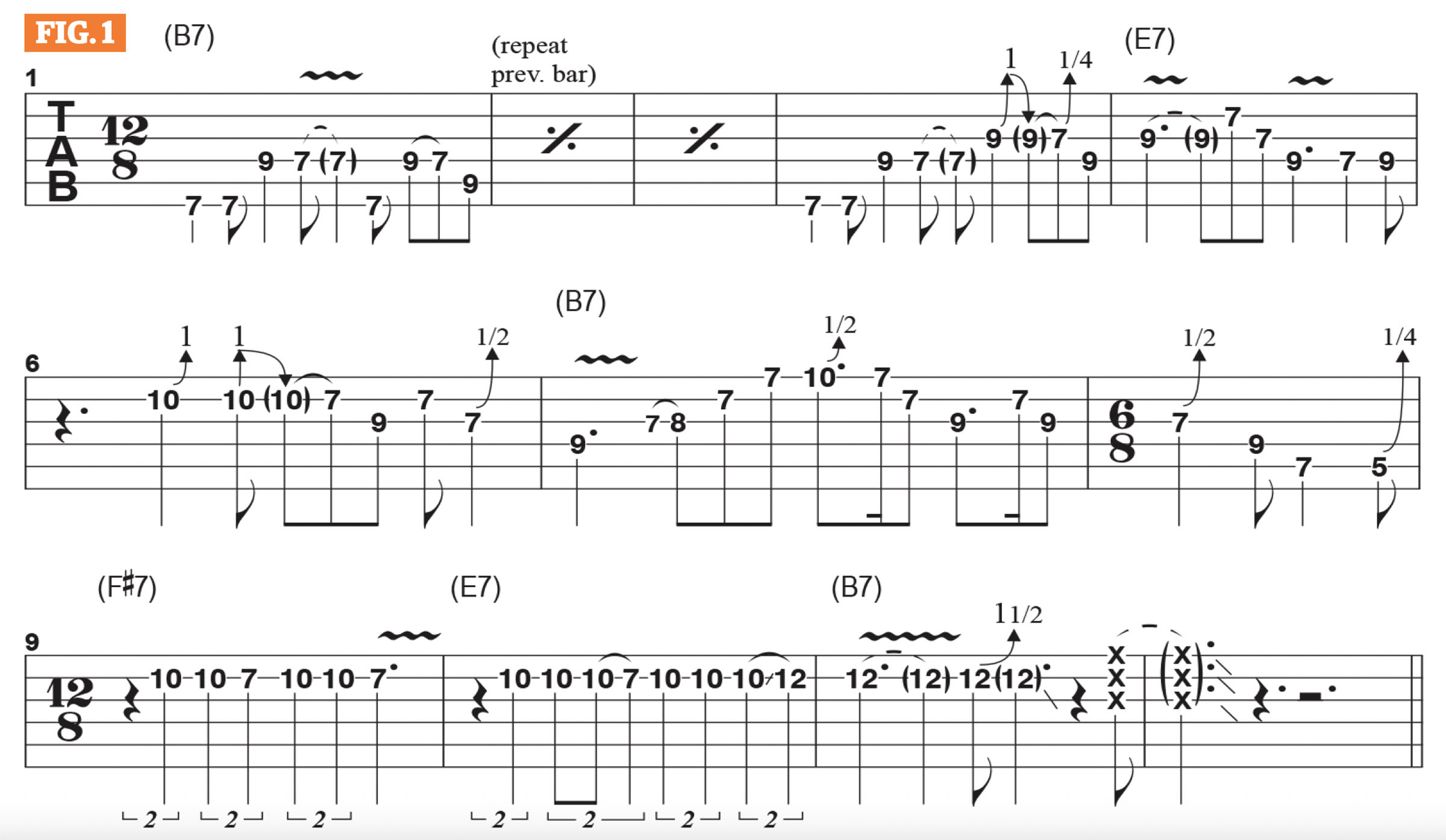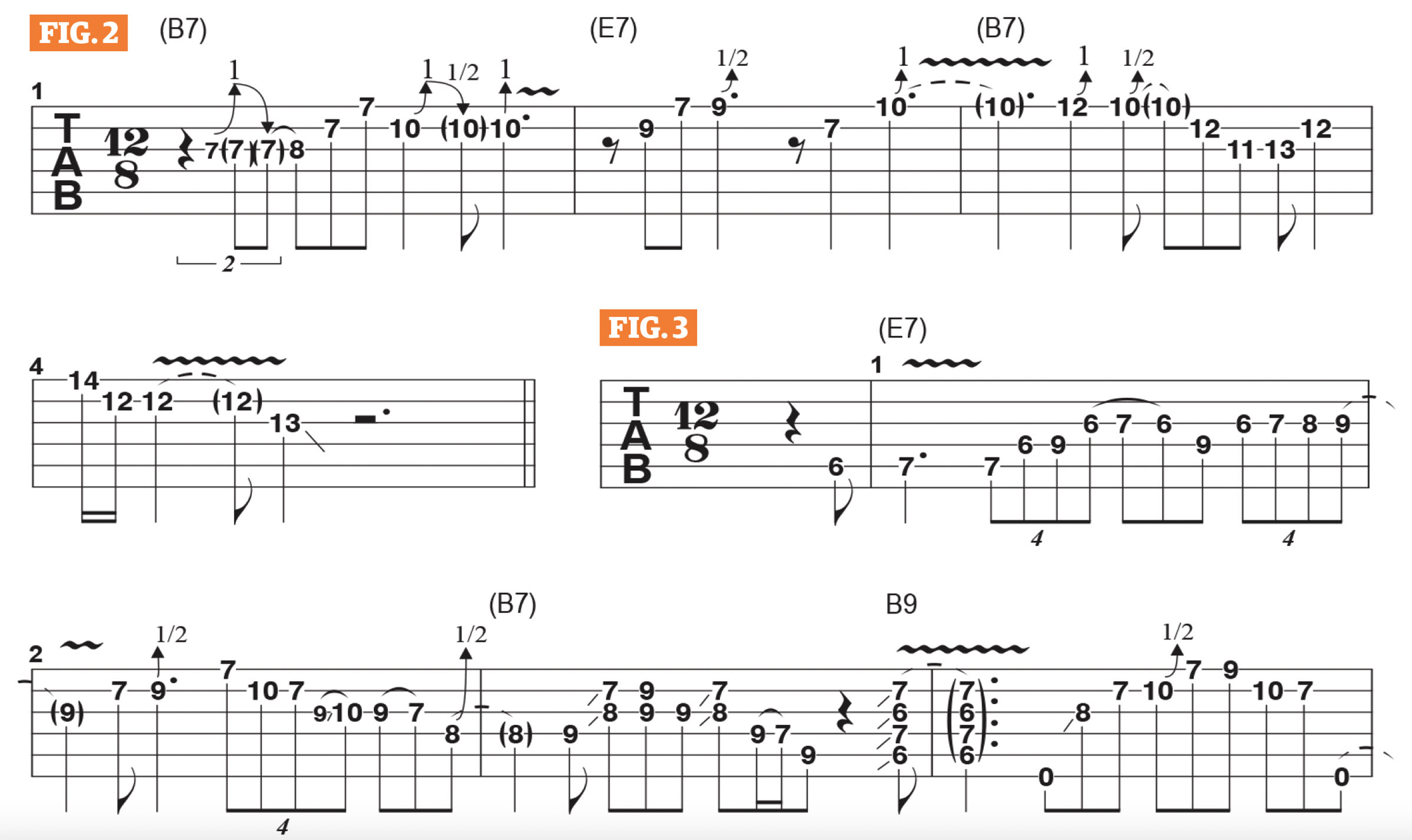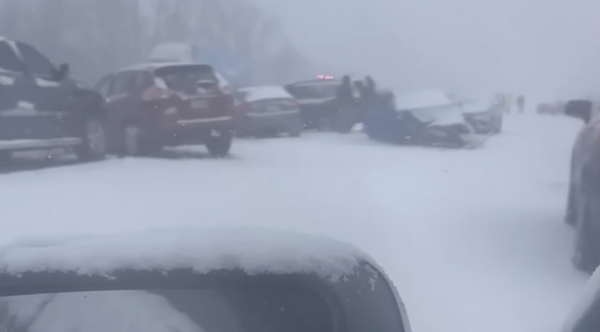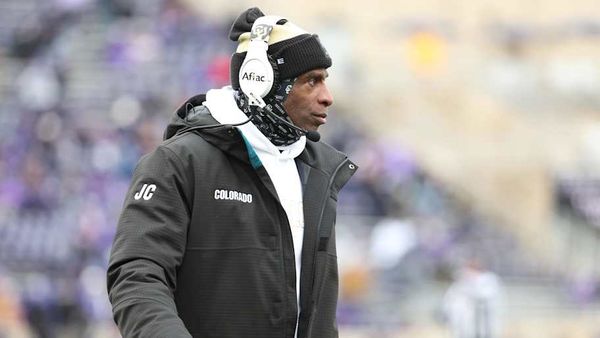
A big part of blues is playing over a “shuffle” groove – a triplet-driven swing-eighths feel with a backbeat (accents on beats 2 and 4) – at various tempos. There are many great shuffle-based tunes.
An example of a great slow shuffle is Jimmy Reed’s Bright Lights, Big City, and a great uptempo shuffle is Memphis Slim’s Steppin’ Out, covered brilliantly by John Mayall with Eric Clapton on the Bluesbreakers’ 1966 album.
One of my favorite medium-slow shuffles is Jeff Beck’s Rock My Plimsoul, which was featured on his debut album, Truth, and is based on the B.B. King blues classic Rock Me Baby.
Played in the key of B, the tune’s main riff is similar to bar 1 of Figure 1, which is a simple, repetitive motif based on the B minor pentatonic scale (B, D, E, F#, A). In bar 3, I play a single-note phrase that sets up the change to the IV (four) chord, E7, in bars 5 and 6, with the riff in bar 6 leading back to the I (one) chord, B7, in bar 7.
In bars 9-12, I emulate what Beck played for his intro solo, alternating between the notes A and F# on the B string with a staccato (short, clipped) attack. And, like Jeff, I end the phrase in bars 11 and 12 with an aggressive slide down the top three strings.

When you’re playing a shuffle at this moderate tempo, you can approach it in a similar way to a slow blues. Figure 2 is played in the style of B.B. King. I begin with a B minor pentatonic-based phrase, bending D, the minor, of “flatted,” 3rd (b3) up a whole step to the 4th, E, release the bend then hammer on from D to the major 3rd, D#, followed by a barre across the top two strings at the 7th fret.
In bar 2, I switch to B major pentatonic (B, C#, D#, F#, G#) and then back to B minor pentatonic, shifting up to 10th position in bar 3. At the end of this bar, I shift up to 12th position and play another B major pentatonic phrase.
Alternating between parallel minor and major pentatonic scales in this way is a staple of blues melody making and can be heard in the playing of all our favorite blues and blues-rock guitarists.

A great benefit of a slower tempo is that it gives you a lot more time to think about what you’re playing and express yourself. In Figure 3, I start on the IV chord, E7, and play simple licks that lay far back in the groove. In bars 3 and 4, I return to the I chord, B7, and play double-stops of D# and F#, and E and G#, referencing B7 and E7, respectively.
Bar 5 is played over the V (five) chord, F#7, and in bar 6 I return to the IV, E7, with lines based on B minor pentatonic. Notice that my phrasing is very “free” here.
One thing I like to do when playing in the key of B is utilize my open B string. For example, I can hammer-on from A to B on the D string while simultaneously plucking the open B note, using hybrid picking.
This is a great sound and one I associate with a British approach, though you will also hear the liberal use of open strings in the playing of the great Billy Gibbons of ZZ Top.
- Joe Bonamassa’s new album, Breakthrough, is out now via J&R Adventures.
- This article first appeared in Guitar World. Subscribe and save.







